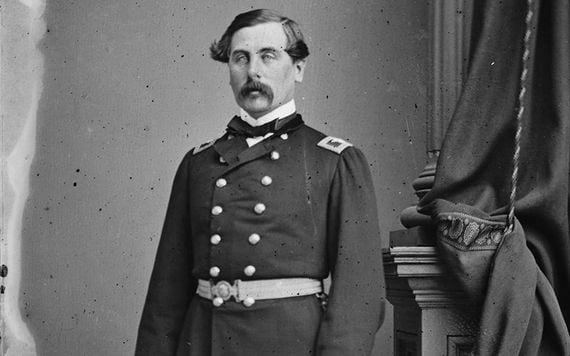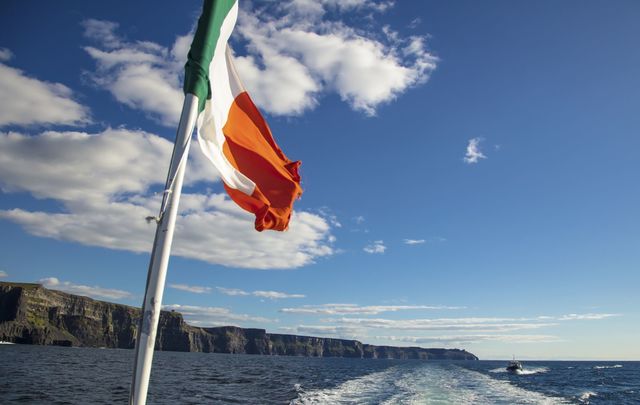Everything you need to know and all the top facts, history and explanation of the Irish tricolor.
What is the meaning of the Irish flag? Where does the Irish tricolor have its origins? Here are some of the top facts about “Bratach na hÉireann” to celebrate it this National Flag Day.
When was the Irish tricolor first flown?
The Irish tricolor was flown publicly for the first time during the Young Irelander Rebellion of 1848. It happened on March 7 in Waterford City at the Wolfe Tone Confederate Club.
What are the origins of the Irish flag?

Thomas Francis Meagher. Image: WikiCommons.
It was flown first by Thomas Francis Meagher, then a leader of the Young Irelander movement, who would go down in history as Brigadier General Thomas Francis Meagher of the Union Army during the American Civil War.
When Meagher hung the tricolor in Waterford, it boldly flew for eight days and nights until it was taken down by the British. It wasn't until after the 1916 Easter Rising and partition, however, that the tricolor began to be fully adopted as the new Irish flag.
What is the meaning of the Irish tricolor?
While very much influenced by a number of rebellions throughout Europe in 1848, Meagher lived in Ireland during the worst years of the famine. Ireland at the time was a deeply divided nation. Meagher dreamed, however, of a country in which the Catholics and Protestants would come together to win independence from England and take rule over themselves. As such, he created a flag which he felt exemplified that coming together of the different peoples and religions.
The green represents Irish nationalism; the orange, Ireland’s Protestant minority, and the Orange Order; the white, lasting peace between the two.
“The white in the center signifies a lasting truce between the orange and the green,” Meagher said, “and I trust that beneath its folds the hands of the Irish Protestant and the Irish Catholic may be clasped, in generous and heroic brotherhood.”
What was the Irish flag before the tricolor?
Up until the Easter Rising in 1916, the tricolor was not yet regarded as the predominant flag of Ireland. Before this, the primary flag of Ireland was green flag with a harp in the center, often known as the "Erin go Bragh" flag. That flag was used as early as 1642, by Owen Roe O’Neill, an Irish soldier, and leader of the O’Neill dynasty.
During the Easter Rising, both flags were flown above the GPO, the headquarters of the rebels, but after this point, the tricolor became more widely accepted.
This was because after the Rising the tricolor was adopted by the IRA during the Irish War of Independence (1919 – 1921). It was then a symbol of the Irish Free State from 1922 – 1937, and then, when the Irish constitution came into law later that year, it was confirmed as the official flag of Ireland by Article 7, which reads: “The national flag of Ireland is the tricolor of green, white and orange.”
The harp remains as Ireland’s national symbol; Ireland is the only country in the world that has a musical instrument as such.
How can I celebrate the tricolor on St Patrick’s Day? Tricolor recipes, of course!
You can find loads of St Patrick’s Day recipes in IrishCentral’s dedicated March 17 section but some of our favorites are this tricolor drink recipe and this tricolor St Patrick’s Day cookies recipe.
Are there any flags similar to the Irish flag?
Yes, the Ivory Coast flag is extremely similar to the Irish tricolor. In fact, the Irish flag was recently used by an athlete from the Ivory Coast at the World Indoor Championships 2018 in England. When Murielle Ahouré stormed to gold in the 60m sprint, securing her country’s first gold medal at the championships, her team were a little unprepared and didn’t have their flag ready for her victory lap. Thankfully, she found an Irish flag in the crowd and the audience member allowed her to borrow it, flip it over and once again represent the Ivory Coast.
*Originally published in March 2018.




Comments